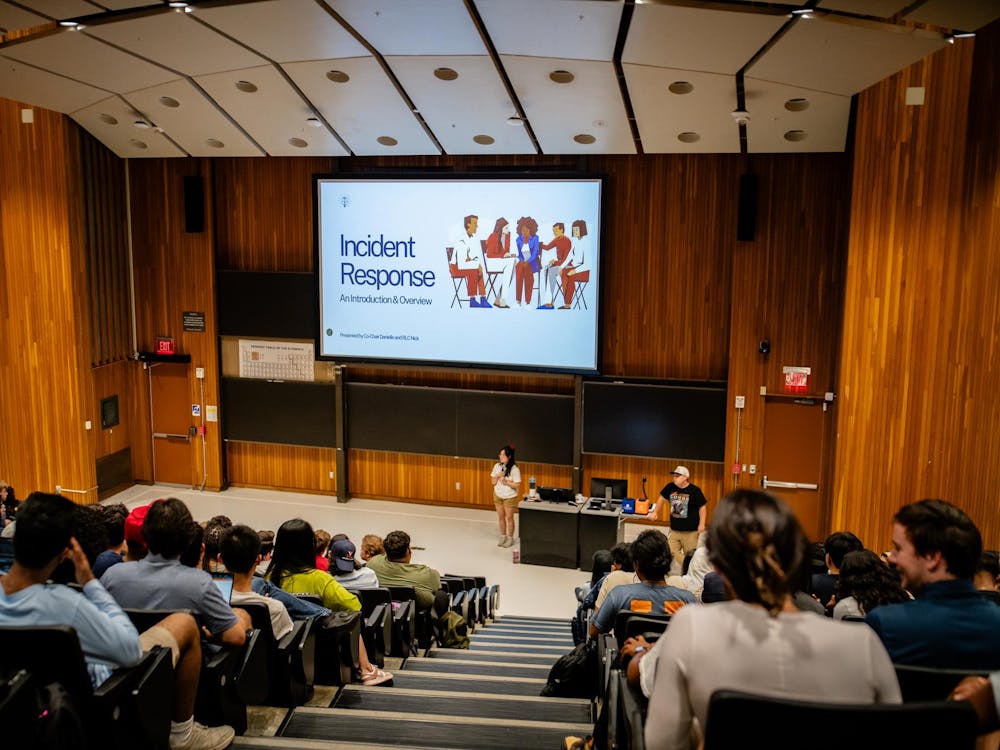THIS IS a response to Diya Gullapalli's March 28th column "American math methods don't add up." As students of mathematics education in the Education School, we feel it is necessary to address some of the issues brought up by Ms. Gullapalli.
When deciding what educational policy to apply in the classroom, one must first decide on the purpose of teaching and learning mathematics. We believe that math should promote analytical thought and problem solving abilities through the development of thinking and reasoning skills. We want our students to become creative investigators capable of original and independent ideas. Math is about making sense of a problem situation and figuring out a way to solve it. Math is not simply about right and wrong answers. The process of finding a solution is what is important.
Rote memorization as advocated in Ms. Gullapalli's column, is an antiquated technique that bores, frustrates and eventually drives students away from math. One of the biggest problems we face in mathematics education is dealing with student beliefs and misconceptions about math. Focusing on drills gives the impression that answers are most important when in fact the thought process and problem-solving skills are what are important.
Rote practice may be good for elementary levels and basic arithmetic, but not for concepts beyond second or third grade math. Rote memorization also discourages students from making sense of mathematical situations. Ms. Gullapalli believes in rote practice, yet ironically admitted that this program "did prevent [her] from moving past Level C: Fraction and Decimals." We have higher aspirations for our students.
While it is sometimes true that standardized test scores from Asian countries are higher than their American counterparts, often the scores in Asian countries are not true representations of students' abilities. Sometimes the better students are selected to take the tests, therefore raising the national average. In the United States every student is tested, not just the gifted and talented, making the American scores a true average.
In addition, these scores are not an accurate measure of a student's intelligence. If Japanese minds are better than American minds, then why are the vast majority of patented inventions made by Americans? Often Japanese companies obtain their success by taking American ideas and refining them. If we focus education on memorization techniques, we will undermine students' development of creative and independent problem solving skills.
The "new math" referred to in Ms. Gullapalli's column is different from previous rote methods because it focuses on student understanding. If we simply drill students over and over with algebra problems taken out of context, then it is highly unlikely that they will be able to meaningfully apply concepts and algorithms to real world problems. The purpose of learning math is not being able to quickly compute the focii of an ellipse but to use these concepts and apply them to real situations such as astronomy.
Ms. Gullapalli's "quote" from the National Council of Teachers of Mathematics misrepresents their ideas and goals. The NCTM does not suggest that "it is no longer crucial for students to be able to add, subtract, multiply and divide" as it was quoted in Ms. Gullapalli's column.
We agree that the role of the teacher in the classroom is crucial. The teacher should be active as a guide to developing student knowledge. But Ms. Gullapalli's quote was secondary and out of context. The NCTM's Teaching Principle as stated in their "Principles and Standards for School Mathematics 2000" is "Mathematics instructional programs depend on competent and caring teachers who teach all students to understand and use mathematics." The emphasis of the principle is to foster student understanding of the reasoning behind mathematics in addition to being able to apply math.
Using technology as a teaching tool in the classroom is beneficial for students because it often allows a concept to be viewed in another way. Any time that the teacher can demonstrate an idea in more than one way increases the likelihood that students will understand the concept. Also in this world of increasing technology use in all sectors, being competent with computers and other forms of technology is an important skill. The most productive mathematical environment is one where students are actively engaged with the teacher and their classmates in a fast-paced curriculum, making meaningful use of technology when appropriate.
(Matt Golenor and Kristen Mohl are fourth-year Education students.)






